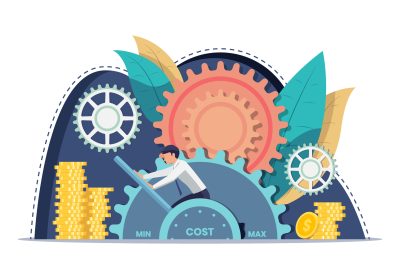More sun for everyone?
The Australian Energy Market Commission’s (AEMC) DER integration consultation has reached a key milestone, with stakeholder feedback submitted on its consultation paper and the initiation of the AEMC’s technical working group.
We take a look at why, and what, reform is needed to ensure that networks can continue to enable the customer-driven transition to distributed energy.
The energy transformation
Australia’s energy system is undergoing a significant transition, moving away from large coal and gas centralised generation to smaller-scale dispersed generation that is increasingly renewable.
This transformation is occurring at grid-scale and at the individual customer level and has fundamentally changed the role of the distribution network.
Traditionally, distribution networks supplied energy in a ‘one way’ flow to end-use customers (consumption services). However, distribution networks are increasingly being used to export customers’ surplus energy – household generation net of household consumption – upstream to other customers or the market (export services).
One in four dwellings are now fitted with rooftop solar[i], a common type of distributed energy resource (DER), and in 2019, rooftop solar PV made up five per cent of total generation in the NEM.[ii] For many customers, the ability of distribution networks to host DER is increasingly becoming as important as its traditional role of delivering energy to end-users.
However, without reform, the ability of networks to meet the ongoing customer-led demand for export services will be limited.
Modernising the regulatory framework
The regulatory framework was developed when energy flows were largely one-way, and therefore was originally designed for the provision of consumption services (the conveyance of electricity to end-use customers). This is evidenced in the NER and NEL, which include key definitions that govern the provision of services that distribution network service providers (DNSPs) provide and how they are regulated.
The way these definitions are described, particularly that of a distribution service, means not only is there uncertainty regarding a customer’s right to export to the grid but also that a network provider does not have a clear mandate to be able to plan and invest in their network to provide these services that customers increasingly value.
Energy Networks Australia is strongly supportive of reform that explicitly recognises the changing role of the electricity grid; from one of traditionally providing consumption services to one of facilitating the two-way flow of energy. When making changes, however, we support a minimal change approach; leveraging off the framework designed for consumption services reduces regulatory burden and the risks of material regulatory change for all stakeholders.
Export services should be recognised as part of the distribution service provided to customers. – Network providers would then have a new requirement to meet or manage customer demand for those services. The existing regulatory requirements, incentive schemes and controls that apply to distribution networks’ provision of consumption services would then apply and could be adapted to accommodate exports.
Export service pricing
Network tariffs are designed to recover a target revenue allowance set by the Australian Energy Regulator. Specific tariff designs do not increase revenue for networks but instead determine how efficient costs are recovered from and between customers – therefore, introducing export tariffs is revenue neutral. Any export tariffs introduced will not result in any increased revenue for network providers.
The NER, developed when energy flows were largely one-way, includes a prohibition of export charges – NER 6.1.4 states:
(a) A Distribution Network Service Provider must not charge a Distribution Network User distribution use of system charges for the export of electricity generated by the user into the distribution network.
(b) This does not, however, preclude charges for the provision of connection services.
As the levels of DER penetration increase and customers increasingly use the distribution network to export their surplus energy, this will drive new investment. However, given NER 6.1.4, all network costs, including the costs for export services, can only be recovered from connection charges and charges for consumption services. This is not consistent with the network pricing objective of cost-reflective pricing.
Energy Networks Australia supports cost-reflective network pricing reform and recommends that the regulatory framework is updated to accommodate export charge, which requires removal of NER 6.1.4. Recognition within the regulatory framework of the provision of export services to customers is linked with the efficient recovery of these costs and cannot be considered in isolation.
This update will not only enable efficient price signals to be provided to customers on which they can base their DER investment and operations decisions, it provides options to improve equity in allocating the costs and benefits of DER and provides a mechanism for those who highly value export access.
The AEMC’s Power of Choice review highlighted that, over the longer term, more cost-reflective pricing offers the prospect of lower electricity costs for all consumers. The development and introduction of any export charges should be done in close consultation with customers and stakeholders. There will be trade-offs between faster or slower transitions, and these issues should be subject to deep engagement with all relevant parties. Modernising the regulatory framework to keep up with the energy transformation is key.
Energy Networks Australia looks forward to continued engagement as this review progresses.
References
[i] Reserve Bank of Australia, Bulletin – March 2020: Renewable Energy Investment In Australia, 19 March 2020.
[ii] Australian Energy Regulator, Data – State of the energy market 2020 – Chapter 1 The electricity market in transition – Figure 1.6 – Renewable generation in the NEM, June 2020.



